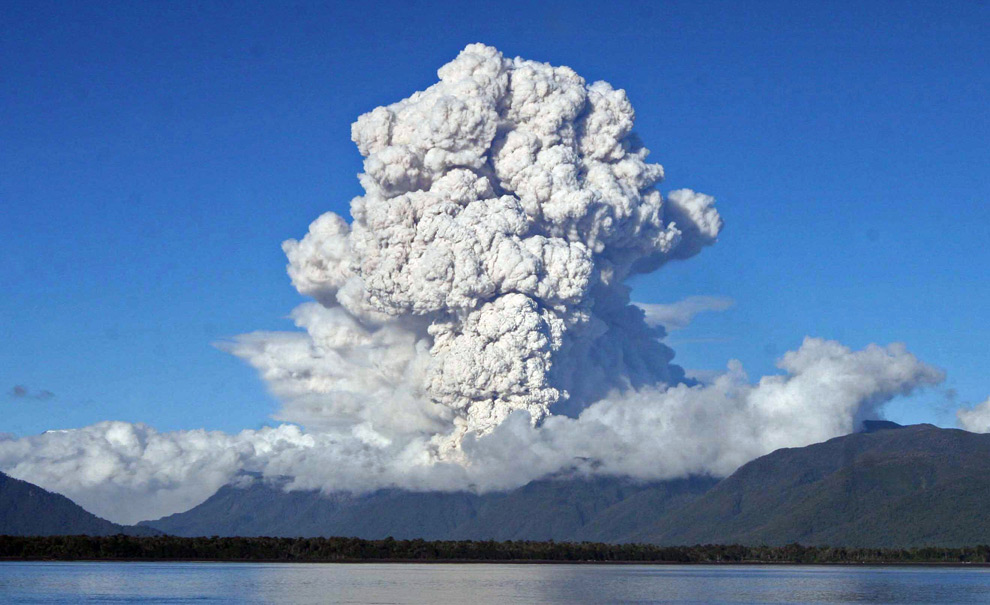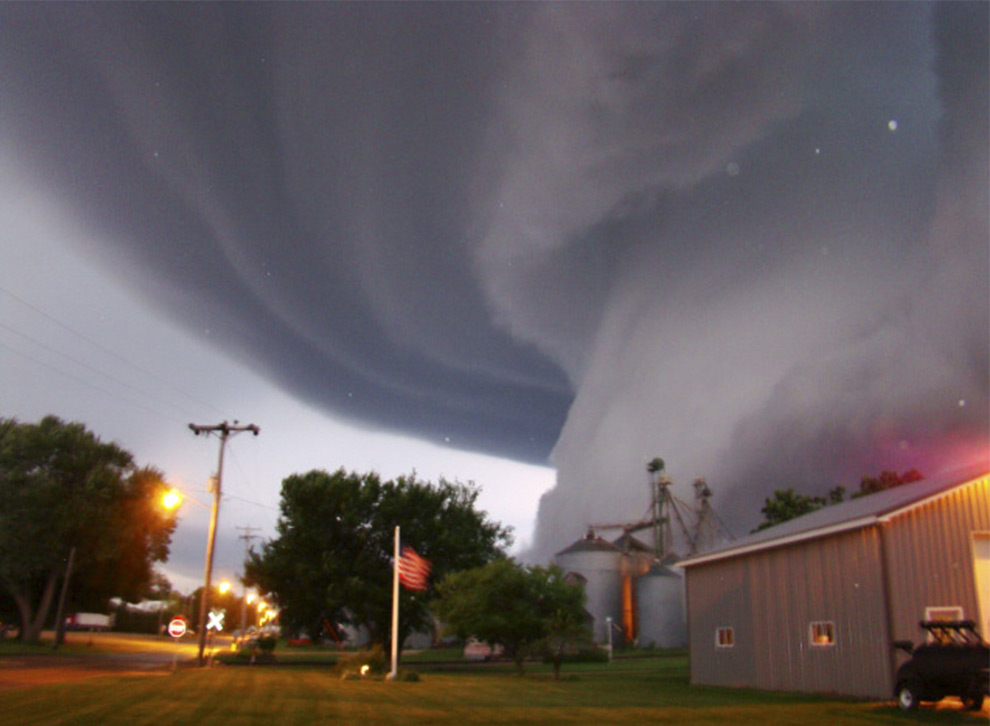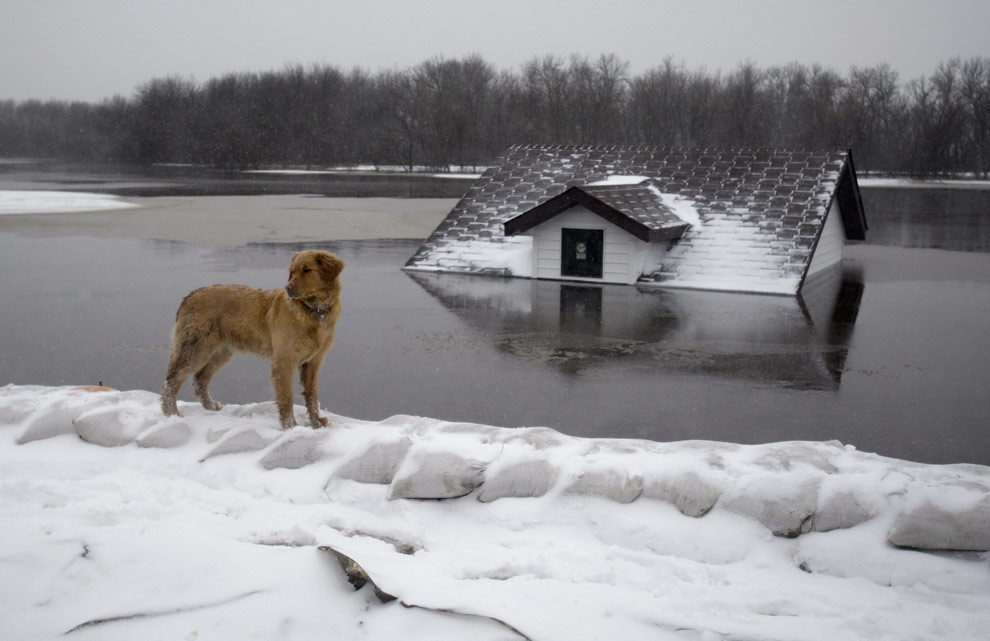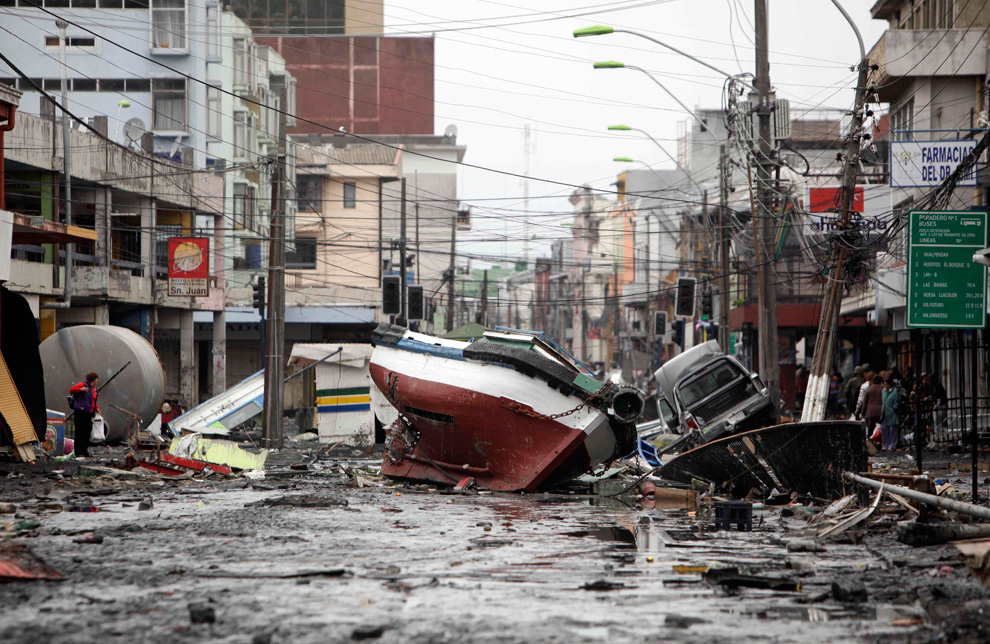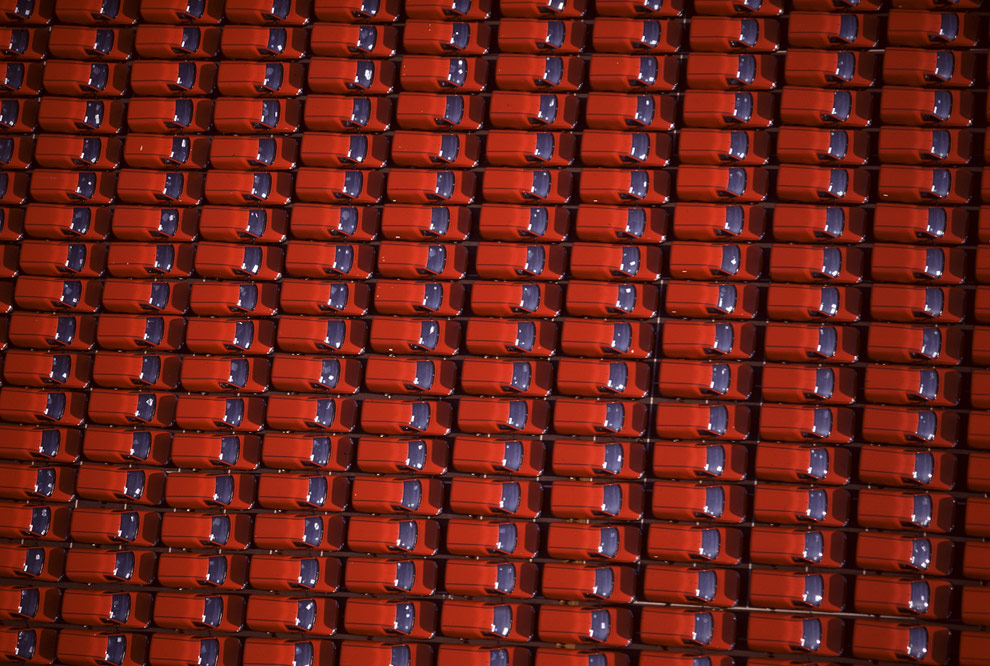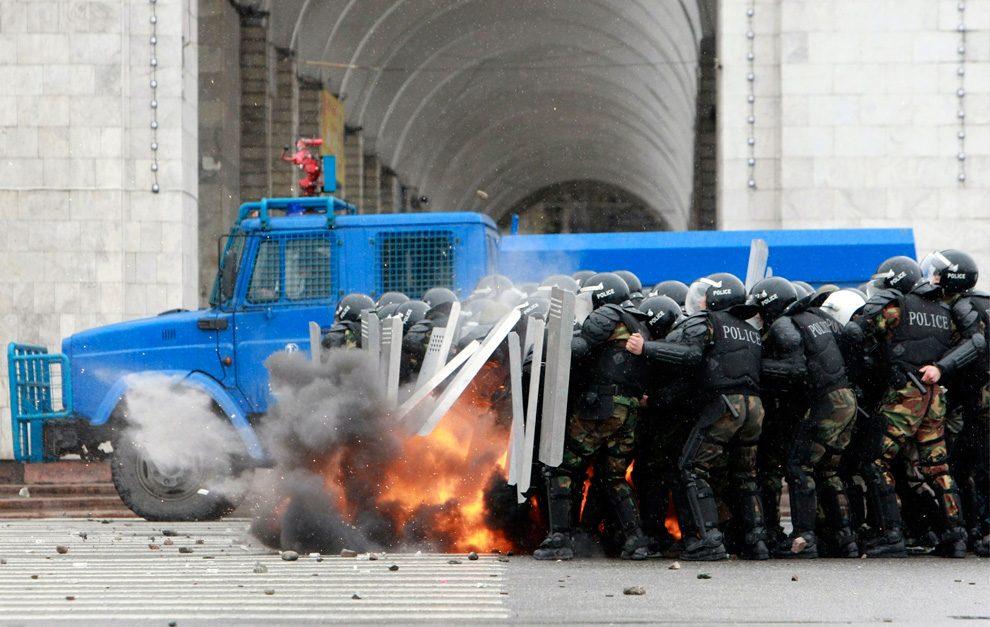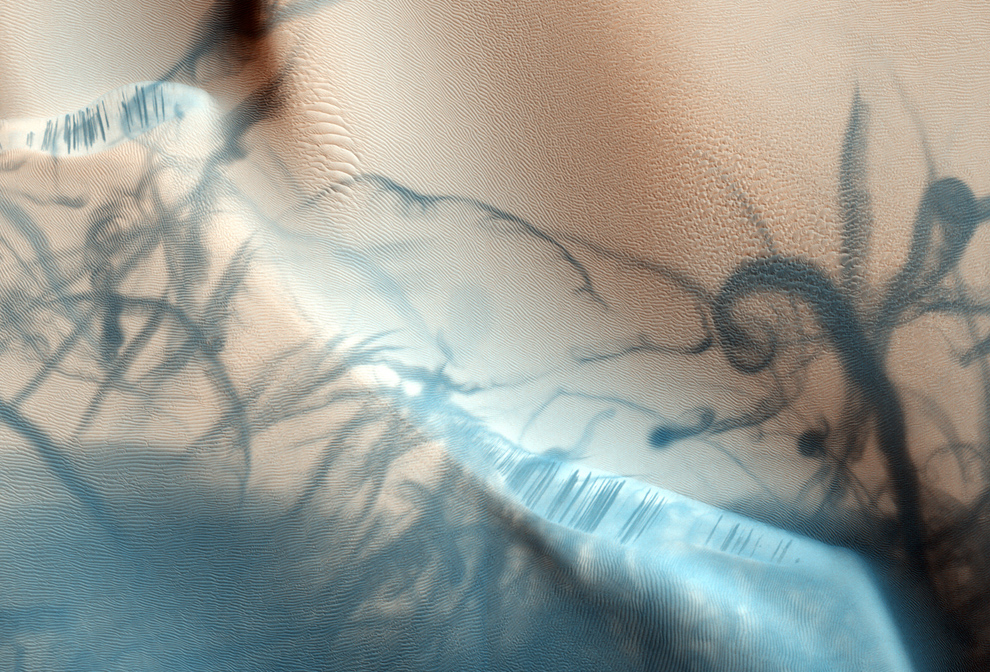2
This composite color infrared image of the center of our Milky Way galaxy reveals a new population of massive stars and new details in complex structures in the hot ionized gas swirling around the central 300 light-years. This view combines the sharp imaging of the Hubble Space Telescope’s Near Infrared Camera and Multi-Object Spectrometer (NICMOS) with color imagery from a previous Spitzer Space Telescope survey to make the sharpest infrared picture ever made of the Galactic core. The core is obscured in visible light by intervening dust clouds, but infrared light penetrates the dust. At this distance - 26,000 light-years away - Hubble reveals details in objects as small as 20 times the size of our own solar system. (NASA, ESA, Q.D. Wang (UMass, Amherst), JPL, and S. Stolovy (Spitzer Science Center/Caltech))
More (see this on
Google Sky)
#
6
Stars burst to life in the chaotic Carina Nebula in this image of a huge pillar taken in visible and in infrared light by NASA’s Hubble Space Telescope. Composed of gas and dust, the nebula resides 7,500 light-years away in the southern constellation Carina. This image, taken in visible light, shows the tip of the 3-light-year-long pillar, bathed in the glow of light from hot, massive stars off the top of the image. Scorching radiation and fast winds (streams of charged particles) from these stars are sculpting the pillar and causing new stars to form within it. Streamers of gas and dust can be seen flowing off the top of the structure. Nestled inside this dense structure are fledgling stars. They cannot be seen in this image because they are hidden by a wall of gas and dust. Although the stars themselves are invisible, one of them is providing evidence of its existence. Thin puffs of material can be seen traveling to the left and to the right of a dark notch in the center of the pillar. The matter is part of a jet produced by a young star. Farther away, on the left, the jet is visible as a grouping of small, wispy clouds. A few small clouds are visible at a similar distance on the right side of the jet. Astronomers estimate that the jet is moving at speeds of up to 850,000 miles an hour. The jet’s total length is about 10 light-years. (NASA, ESA, and the Hubble SM4 ERO Team)
More (see this on
Google Sky)
#
8
The core of the spectacular globular cluster Omega Centauri glitters with the combined light of 2 million stars. The entire cluster contains 10 million stars, and is among the biggest and most massive of some 200 globular clusters orbiting the Milky Way Galaxy. Omega Centauri lies 17,000 light-years from Earth. Image acquired in June of 2002. (NASA, ESA, and the Hubble Heritage Team, STScI/AURA)
More (see this on
Google Sky)
#
9
Messier 104 (M104), the Sombrero galaxy. has a brilliant white, bulbous core encircled by the thick dust lanes comprising the spiral structure of the galaxy. As seen from Earth, the galaxy is tilted nearly edge-on. We view it from just six degrees north of its equatorial plane. At a relatively bright magnitude of +8, M104 is just beyond the limit of naked-eye visibility and is easily seen through small telescopes. The Sombrero lies at the southern edge of the rich Virgo cluster of galaxies and is one of the most massive objects in that group, equivalent to 800 billion suns. The galaxy is 50,000 light-years across and is located 28 million light-years from Earth. X-ray emission suggests that there is material falling into the compact core, where a 1-billion-solar-mass black hole resides. In the 19th century, some astronomers speculated that M104 was simply an edge-on disk of luminous gas surrounding a young star, which is prototypical of the genesis of our solar system. But in 1912, astronomer V. M. Slipher discovered that the hat-like object appeared to be rushing away from us at 700 miles per second. This enormous velocity offered some of the earliest clues that the Sombrero was really another galaxy, and that the universe was expanding in all directions. (NASA and The Hubble Heritage Team, STScI/AURA)
More (see this on
Google Sky)
#
11
What resemble dainty butterfly wings are actually roiling cauldrons of gas heated to more than 36,000 degrees Fahrenheit. The gas is tearing across space at more than 600,000 miles an hour - fast enough to travel from Earth to the Moon in 24 minutes! A dying star that was once about five times the mass of the Sun is at the center of this fury. It has ejected its envelope of gases and is now unleashing a stream of ultraviolet radiation that is making the cast-off material glow. The Wide Field Camera 3 (WFC3), installed by NASA astronauts in May 2009, snapped this image of the planetary nebula, catalogued as NGC 6302, which lies within our Milky Way galaxy, roughly 3,800 light-years away in the constellation Scorpius. The glowing gas is the star’s outer layers, expelled over about 2,200 years. NGC 6302 was imaged on July 27, 2009, with Hubble’s Wide Field Camera 3 in ultraviolet and visible light. Filters that isolate emissions from oxygen, helium, hydrogen, nitrogen, and sulfur from the planetary nebula were used to create this composite image. (NASA, ESA, and the Hubble SM4 ERO Team)
More (see this on
Google Sky)
#
15
This image shows the edge of a giant gaseous cavity within the star-forming region called NGC 3324. The glowing nebula has been carved out by intense ultraviolet radiation and stellar winds from several hot, young stars. A cluster of extremely massive stars, located well outside this image in the center of the nebula, is responsible for the ionization of the nebula and excavation of the cavity. The image also reveals dramatic dark towers of cool gas and dust that rise above the glowing wall of gas. The dense gas at the top resists the blistering ultraviolet radiation from the central stars, and creates a tower that points in the direction of the energy flow. The high-energy radiation blazing out from the hot, young stars in NGC 3324 is sculpting the wall of the nebula by slowly eroding it away. Located in the Southern Hemisphere, NGC 3324 is at the northwest corner of the Carina Nebula (NGC 3372), home of the Keyhole Nebula and the active, outbursting star Eta Carinae. The entire Carina Nebula complex is located at a distance of roughly 7,200 light-years, and lies in the constellation Carina. (NASA, ESA, and The Hubble Heritage Team STScI/AURA)
More (see this on
Google Sky)
#
17
This very deep image taken with the NASA/ESA Hubble Space Telescope shows the spiral galaxy NGC 4921 along with a spectacular backdrop of more distant galaxies. It was created from a total of 80 separate pictures through yellow and near-infrared filters. (NASA, ESA and K. Cook, Lawrence Livermore National Laboratory, USA)
More (see this on
Google Sky)
#
19
A small region inside the massive globular cluster Omega Centauri which boasts nearly 10 million stars. The stars in Omega Centauri are about about 16,000 light-years from Earth, and are between 10 billion and 12 billion years old. The majority of the stars in the image are yellow-white, like our Sun. These are adult stars that are shining by hydrogen fusion. Toward the end of their normal lives, the stars become cooler and larger. These late-life stars are the orange dots in the image. Even later in their life cycles, the stars continue to cool down and expand in size, becoming red giants. These bright red stars swell to many times larger than our Sun’s size and begin to shed their gaseous envelopes. After ejecting most of their mass and exhausting much of their hydrogen fuel, the stars appear brilliant blue. Only a thin layer of material covers their super-hot cores. These stars are desperately trying to extend their lives by fusing helium in their cores. At this stage, they emit much of their light at ultraviolet wavelengths. When the helium runs out, the stars reach the end of their lives. Only their burned-out cores remain, and they are called white dwarfs (the faint blue dots in the image). White dwarfs are no longer generating energy through nuclear fusion and have gravitationally contracted to the size of Earth. They will continue to cool and grow dimmer for many billions of years until they become dark cinders. All of the stars in the image are cozy neighbors. The average distance between any two stars in the cluster’s crowded core is only about a third of a light-year, roughly 13 times closer than our Sun’s nearest stellar neighbor, Alpha Centauri. Although the stars are close together, WFC3’s sharpness can resolve each of them as individual stars. If anyone lived in this globular cluster, they would behold a star-saturated sky that is roughly 100 times brighter than Earth’s sky. Hubble observed Omega Centauri on July 15, 2009, in ultraviolet and visible light. (NASA, ESA, and the Hubble SM4 ERO Team)
More (see this on
Google Sky)
#
21
This portrait is the most detailed view of the largest stellar nursery in our local galactic neighborhood. The massive, young stellar grouping, called R136, is only a few million years old and resides in the 30 Doradus Nebula, a turbulent star-birth region in the Large Magellanic Cloud, a satellite galaxy of our Milky Way located some 170,000 light-years away. Many of the diamond-like icy blue stars are among the most massive stars known. Several of them are over 100 times more massive than our Sun. The image, taken by Hubble on October 20-27, 2009, spans about 100 light-years across. (NASA, ESA, and F. Paresce, R. O’Connell, and the Wide Field Camera 3 Science Oversight Committee)
More #
22
Hubble’s Advance Camera for Surveys (ACS) recently took this image of galaxy NGC 4522 in the Virgo Cluster. Backdropped by many other more distant galaxies, the impression given by NGC 4522 is that it is flying apart. A phenomenon called ram pressure stripping is mangling the galaxy as it hurtles through a region of hot x-ray emitting gas at 10 million kilometers per hour- stripping away its own gas content. NGC 4522 is some 60 million light years away.
More #
23
The star cluster Pismis 24 lies in the core of the large emission nebula NGC 6357 that extends one degree on the sky in the direction of the Scorpius constellation. Part of the nebula is ionised by the youngest (bluest) heavy stars in Pismis 24. The intense ultraviolet radiation from the blazing stars heats the gas surrounding the cluster and creates a bubble in NGC 6357. The presence of these surrounding gas clouds makes probing into the region even harder. One of the top candidates for the title of “Milky Way stellar heavyweight champion” was, until now, Pismis 24-1, a bright young star that lies in the core of the small open star cluster Pismis 24 (the bright stars in the Hubble image) about 8,000 light-years away from Earth. Pismis 24-1 was thought to have an incredibly large mass of 200 to 300 solar masses. New NASA/ESA Hubble measurements of the star, have, however, resolved Pismis 24-1 into two separate stars, and, in doing so, have “halved” its mass to around 100 solar masses. (NASA, ESA and Jesoes Maz Apellyniz, Instituto de astrofisica de Andalucia, Spain, Davide De Martin, ESA/Hubble)
More (see this on
Google Sky)
#
